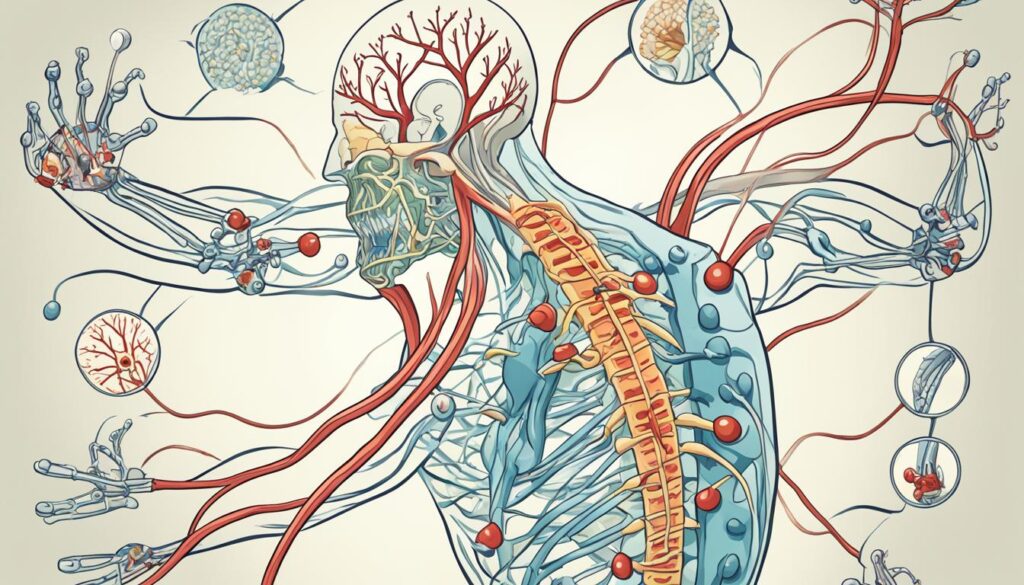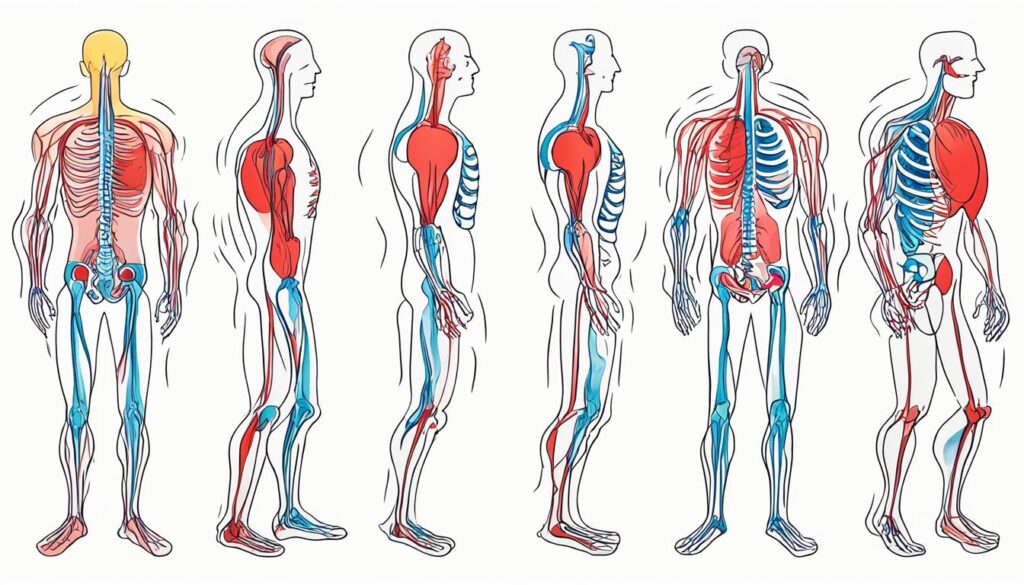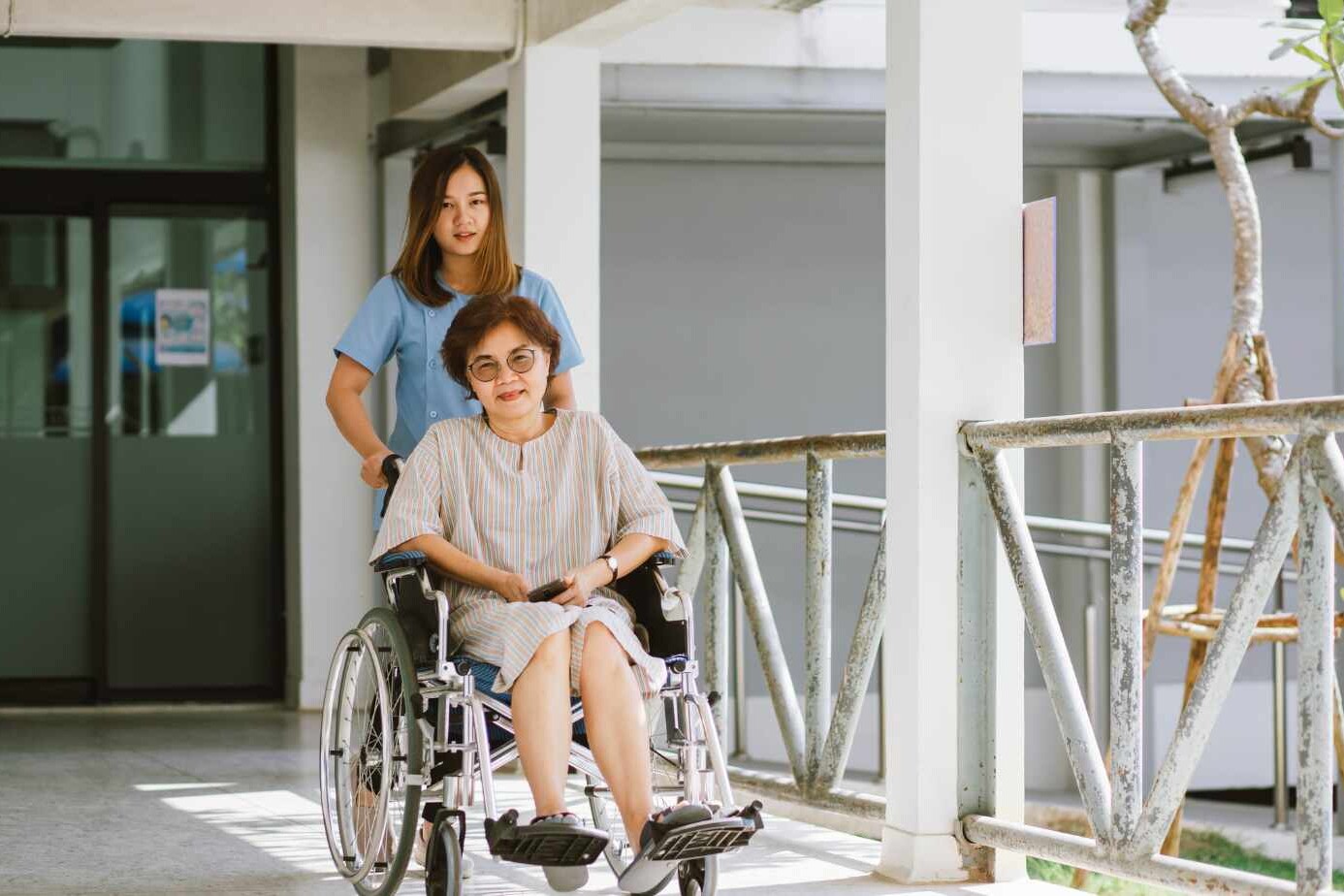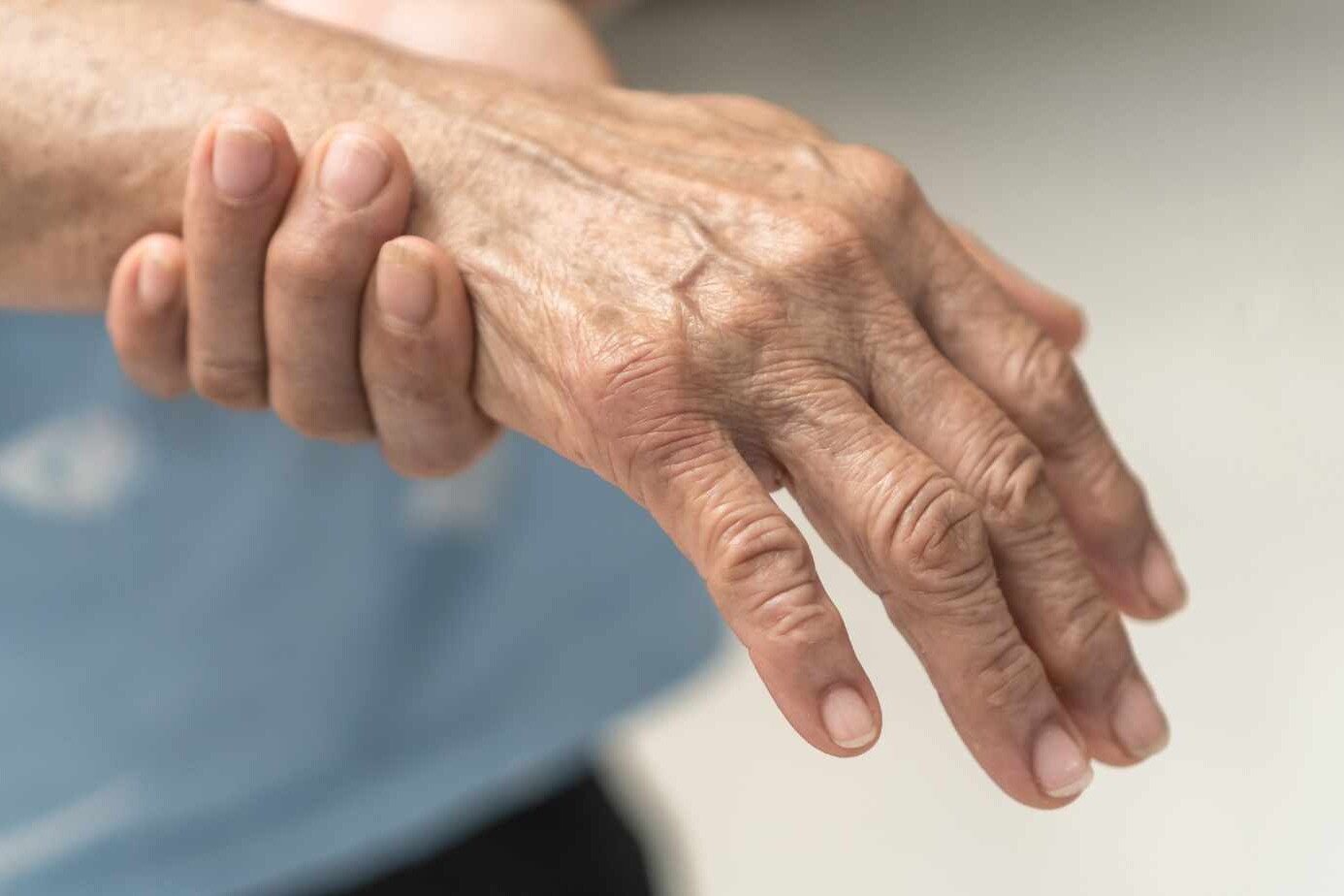Guillain-Barré syndrome (GBS) is a immune mediated neurological disorder. The immune system wrongly attacks the nerves. It causes sudden numbness, weakness, and in some cases, paralysis. Luckily, there are effective treatments to manage the symptoms and aid recovery.
This article will look at the latest treatments for GBS. It will cover plasma exchange, IVIG therapy, supportive care, and new therapies. Knowing about these treatments can help you on your path to recovery from guillain-barré syndrome.
Table of Contents
ToggleUnderstanding Guillain-Barré Syndrome
What is Guillain-Barré Syndrome?
Guillain-Barré syndrome, or GBS, is a rare condition that affects the nerves. It comes when the immune system attacks nerves by mistake. This attack damages the nerves, causing issues like muscle weakness, numbness, and sometimes paralysis.
Causes and Risk Factors
The exact reason for GBS is not fully known. However, it often starts after an infection or vaccination. People with certain infections, having had specific vaccinations, or existing health problems are more at risk. Knowing these facts can help you and your doctor spot the condition early.

Diagnosis and Early Detection
It’s key to catch Guillain-Barré syndrome early for effective treatment. Signs usually show up as muscle weakness that gets worse, tingling or numbness, and trouble keeping balance. Sometimes, it can quickly lead to breathing problems from muscle weakness.
Symptoms to Watch Out For
The main signs of Guillain-Barré syndrome are:
- Starting weakness in the legs, then moving up
- Feeling of tingling or parts of the body going numb
- Finding it hard to keep balance and move well
- Severe breathing or swallowing problems in some cases
If you or someone you know shows these signs, get help as soon as possible. Quick diagnosis and treatment are very important for getting better.
Diagnostic Tests and Procedures
Doctors use specific tests to check for Guillain-Barré syndrome. These may include:
- Spinal tap to look for high protein in the spinal fluid
- Nerve tests to see how well they work
- A test called electromyography (EMG) to check muscle activity
These tests rule out other problems. They help doctors plan the best care for you if you have Guillain-Barré syndrome.

Quickly spotting and treating the disease is crucial for not getting worse and getting fully better. Knowing the early signs and getting medical help is the first step to deal with this tough condition.
Plasma Exchange (Plasmapheresis)
One top treatment for Guillain-Barré syndrome (GBS) is plasma exchange, or plasmapheresis. This method takes out the patient’s blood. It then removes the plasma, the liquid part. Next, it puts the blood cells back. It replaces the plasma with a clean fluid. This removes any bad antibodies that harm the nerves.
How Plasma Exchange Works
Plasma exchange helps by taking away the damaging antibodies. This slows down GBS. A doctor draws the patient’s blood. This is usually from the arm or neck. It goes through a machine. This machine takes out the plasma. Then, it adds a good fluid. After, the blood goes back to the patient.
Benefits and Risks
Most consider plasma exchange safe for [guillain barre syndrome treatment]. But, it does have some risks, like infections. Plasma exchange might also lower blood pressure or calcium levels. Yet, it has great benefits. It helps people with GBS. They recover the ability to walk sooner. They might not need a breathing machine. Their muscles might regain strength better in the long run.

Quick plasma exchange is key for those getting worse with GBS symptoms. It’s useful for all GBS cases, even in severe ones. Proper care during therapy helps handle side effects. Thus, plasma exchange is a vital part of treating this nerve disorder.
Intravenous Immunoglobulin (IVIG) Therapy
IVIG therapy is a common treatment for Guillain-Barré syndrome (GBS). It’s based on a blood product with lots of antibodies. These come from healthy donors. IVIG goes into the vein to stop harmful antibodies. This helps lessen how bad the symptoms are and how quickly people recover from GBS. The treatment lasts several days. It’s known to be both effective and safe.
A review done by Cochrane in 2006 showed that IVIG works for GBS. Other studies, including ones from 1992 and 1997, found IVIG and plasma exchange to be equally good. Both help with treating Guillain-Barré syndrome.
In 2004, a study looked into adding methylprednisolone to IVIG for GBS. The results showed no added benefit. Also, in 2002, a study on milder cases of GBS offered information on their care and the risk of infections.
For GBS patients who can’t walk, IVIG is given in a single dose over five days. Each session takes about three hours. People often need six to 12 months to fully recover. But for some, it may take up to three years. The recovery varies, with some getting completely better and others still having some weakness.
IVIG treatment can cause side effects like headaches and flu symptoms. Some might get bruises or feel sore. Others taste metal in their mouth. It’s critical for patients and doctors to watch for these signs during the treatment.
Supportive Care and Symptom Management
Primary treatments like plasma exchange are key in [guillain barre syndrome treatment]. Additional care is needed for full recovery. For Guillain-Barré syndrome, support and symptom management are critical.
Pain Relief Medications
The nerve damage from [guillain barre syndrome treatment] can be very painful. Your doctors might give you pain meds to help. This can make you feel more comfortable as you heal.
Breathing and Swallowing Assistance
Some people with [guillain barre syndrome treatment] have weak muscles for breathing or swallowing. It might be hard for them to breathe or swallow right. Doctors can help with breathing using special machines. They also suggest ways to make swallowing easier.
Physical Therapy and Rehabilitation
For those with [guillain barre syndrome treatment], rebuilding strength is important. Doctors and therapists will create a plan just for you. It focuses on exercises and using tools to help you get back to daily life.
Support and symptom management aid in [guillain barre syndrome treatment] recovery. They work alongside main treatments. This holistic approach improves patients’ lives on all fronts.
Guillain-Barré Syndrome Treatment
Plasma exchange and IVIG therapy are common treatments for Guillain-Barré syndrome (GBS). Sometimes, doctors mix these treatments or try new ones to better help patients. Using both plasma exchange and IVIG together might work better than using just one. This approach deals with symptoms and helps recovery more fully.
Combination Therapies
Doctors might suggest both plasma exchange and IVIG for GBS patients. Using both can take out bad antibodies in the blood and boost the immune system. This could make recovery quicker and complete. It’s especially helpful for severe GBS cases or when one treatment doesn’t work alone.
Experimental and Emerging Treatments
Experts are always looking for new GBS treatments. They’re trying out different ways to make things better and reduce long-lasting effects. Some new treatments in research include corticosteroids, monoclonal antibodies, and stem cells. These methods aim to stop the immune system from hurting the nerves and help them heal.
The fight against Guillain-Barré is getting stronger with new treatments and hope. Patients working closely with their doctors can keep up with the latest treatment news. This way, they can find the best options for their recovery.
Conclusion
Guillain-Barré syndrome (GBS) is a serious nerve condition. It can be life-threatening but can get better with quick and right treatment. Most people recover fully or they get a lot better. Treatments like plasma exchange and IVIG help a lot, along with supportive care. New treatments are always coming out, making things look good for the future.
If you know the treatment options for GBS, you can work with your doctors better. This way, you can improve and get the best results during your recovery. It’s important to keep informed and proactive if you or someone you love has GBS. This can really help in getting better and becoming independent again.
GBS may be tough, but there are many ways to treat it now. Those who fight this illness are really strong and give others hope. With good care and support, life can get back to normal for people with GBS. Being well-informed and pushing for good treatments is key to getting better. It helps you take charge of your health and look forward to a better life.
FAQ
What is Guillain-Barré syndrome?
Guillain-Barré syndrome (GBS) is a rare disorder. The immune system attacks nerves. This causes sudden numbness, weakness, and maybe paralysis.
What are the causes and risk factors for Guillain-Barré syndrome?
The cause of GBS is not fully known. It can start after getting sick or a vaccine. Risks include certain illnesses, vaccines, and medical conditions.
What are the typical symptoms of Guillain-Barré syndrome?
GBS shows as muscle weakness, numbness, and balance issues. It can quickly lead to breathing problems. Let’s move on to the next question.
How is Guillain-Barré syndrome diagnosed?
Doctors use tests like a spinal tap and nerve tests. They do this to be sure of the diagnosis. Quick treatment is key for a better recovery.
What is plasma exchange (plasmapheresis) and how does it treat Guillain-Barré syndrome?
Plasma exchange removes blood, takes out harmful plasma, and puts back the blood. It can remove the bad antibodies. This may help slow the disease.
What is intravenous immunoglobulin (IVIG) therapy and how does it treat Guillain-Barré syndrome?
IVIG is a blood product with many antibodies. Given through a vein, it can stop the bad antibodies. This makes symptoms less severe and helps recovery.
What other types of supportive care and symptom management are provided for individuals with Guillain-Barré syndrome?
Those with GBS need pain relief, help breathing and swallowing, and therapy. The healthcare team creates a plan for each patient. This helps them recover.
What are some of the emerging treatments for Guillain-Barré syndrome?
New treatments like corticosteroids and stem cells are being studied. These may make GBS easier to treat. Now, let’s go to the next topic.
Source Links
- https://www.mayoclinic.org/diseases-conditions/guillain-barre-syndrome/diagnosis-treatment/drc-20363006
- https://www.hopkinsmedicine.org/health/conditions-and-diseases/guillainbarr-syndrome
- https://www.ncbi.nlm.nih.gov/pmc/articles/PMC3152164/
- https://www.who.int/news-room/fact-sheets/detail/guillain-barré-syndrome
- https://www.webmd.com/brain/what-is-guillain-barre
- https://www.dukehealth.org/blog/plasma-exchange-therapy-guillain-barre-helps-woman-make-drastic-recovery
- https://pubmed.ncbi.nlm.nih.gov/12076424/
- https://www.ncbi.nlm.nih.gov/pmc/articles/PMC6464100/
- https://www.ncbi.nlm.nih.gov/pmc/articles/PMC2883091/
- https://www.ncbi.nlm.nih.gov/pmc/articles/PMC10242495/
- https://infusionassociates.com/infusion-therapy/guillain-barre-syndrome/
- https://emedicine.medscape.com/article/315632-treatment
- https://www.ncbi.nlm.nih.gov/books/NBK532254/
- https://www.nature.com/articles/s41582-019-0250-9
About The Author

This article is medically reviewed by Dr. Chandril Chugh, Board-Certified Neurologist, providing expert insights and reliable health information.
Dr. Chandril Chugh is a U.S.-trained neurologist with over a decade of experience. Known for his compassionate care, he specializes in treating neurological conditions such as migraines, epilepsy, and Parkinson’s disease. Dr. Chugh is highly regarded for his patient-centered approach and dedication to providing personalized care.
→ Book a consultation to discover which remedies suit your needs best.




